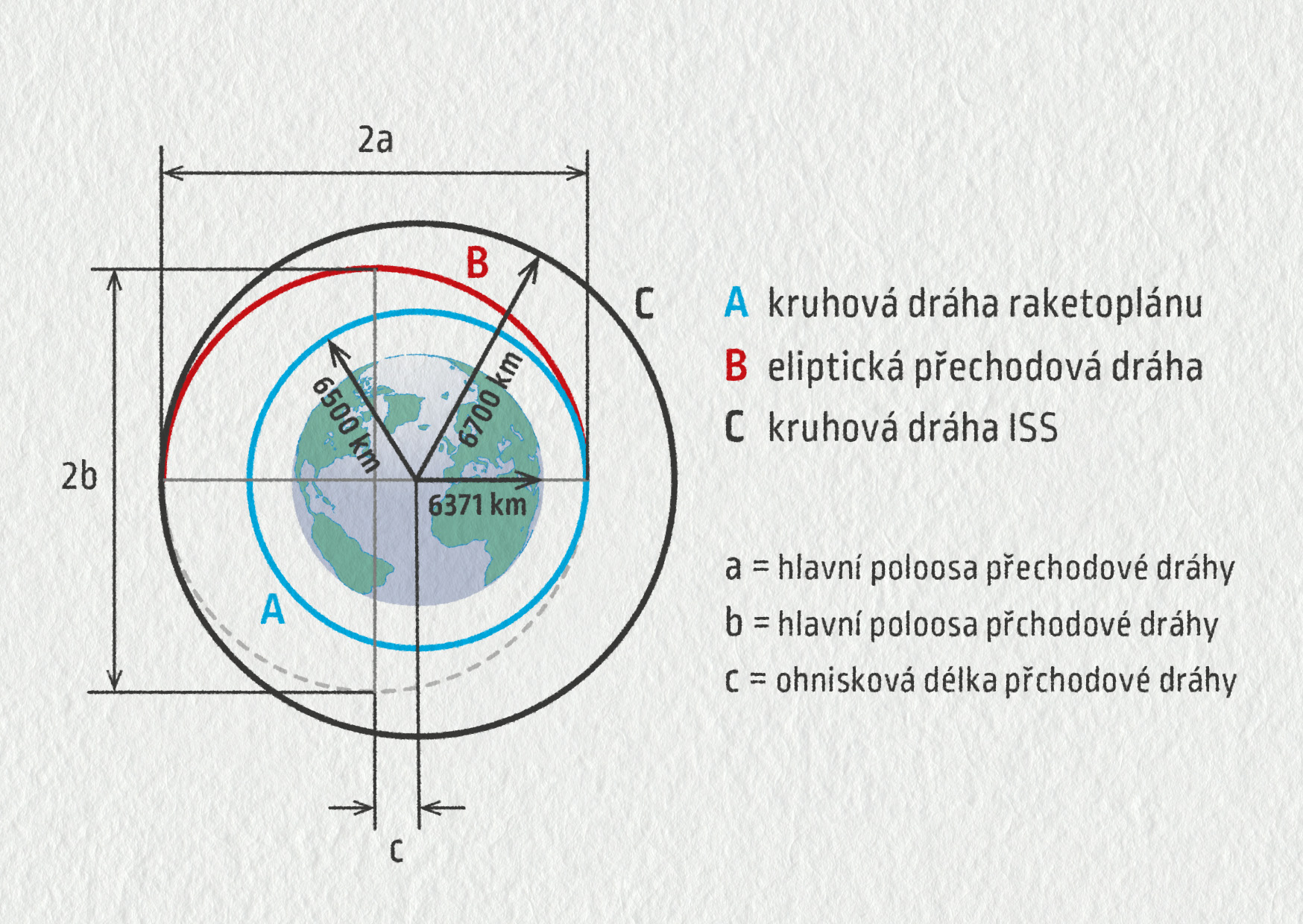Space shuttle to ISS
Přečtěte si následující článek o trajektoriích raketoplánu a poté odpovězte na otázky.
- Kruhové dráhy raketoplánu a ISS jsou popsány jejich poloměry. Vypočítejte velkou poloosu \(a\) přechodové dráhy mezi oběma kruhovými dráhami.
- Řídící jednotka letu FDO používá k popisu přechodové dráhy právě velikost velké poloosy \(a\) této elipsy. Střed Země je vzdálen jednu ohniskovou délku \(c\) od středu přechodové elipsy. Pomocí nákresu na obrázku 15.2 vypočítejte ohniskovou délku \(c\).
- Vypočítejte délku malé poloosy přechodové elipsy.
- Za předpokladu, že souřadnicové osy jsou ve středu elipsy, napište rovnici, která představuje přechodovou elipsu v kanonickém tvaru.
- Termín excentricita \(e=c/a\) používá NASA pro popis tvaru eliptické dráhy. Vypočítejte excentricitu elipsy přechodové dráhy. Odpověď ponechte ve tvaru zlomku.
- Co vám excentricita říká o tvaru elipsy? Znázorněte elipsu a ověřte si svou odpověď.
The International Space Station (ISS) is an internationally developed research facility and is the largest human-built satellite in Earth’s orbit. It travels around Earth once every 91 minutes at an altitude of approximately 250 miles (400 km). It is an incredible and complex engineering endeavor that has been assembled while in orbit.
When the space shuttle launches from NASA Kennedy Space Center, it must launch within a certain time frame (called a launch window) in order to successfully dock with the ISS. Launch windows are calculated so that the space shuttle will reach an orbit that is slightly lower than the ISS, but in the same orbital plane. The space shuttle travels slightly faster in its lower orbit, and thus “catches up” to the ISS, while making small orbit corrections to raise its orbit and align the vehicles. The space shuttle then docks with the ISS to resupply, exchange crew members, and deliver hardware—such as a new ISS module, solar panels, or hardware for experiments.

Zdroj
Problem
The space shuttle is preparing to launch, rendezvous, and dock with the ISS. Both FDO and TOPO flight controllers have worked together to predict the trajectory of the space shuttle and to match the orbit of the ISS, once the space shuttle reaches low Earth orbit. The space shuttle is launched to a lower orbit so that it circles the Earth faster and can “catch up” to the ISS. Figure 15.2 depicts the coplanar, circular orbits of the space shuttle and the ISS. The space shuttle adjusts its orbit to an ellipse, in order to transfer between the two orbits and rendezvous with the ISS.

Zdroj

